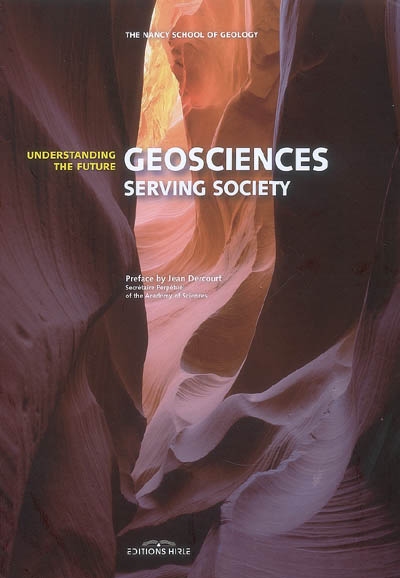en savoir plus

Permet à tous ses détenteurs d'obtenir 5% de réduction sur tous les livres lors du retrait en magasin (réduction non cumulable avec les réductions de type étudiant).
Offre également un certain nombre d'avantages auprès de nos partenaires.
Avec les favoris, retrouvez dans un espace les sélections effectuées au fur et à mesure de vos navigations dans le site.
Constituez pour votre usage personnel vos listes de livres en prévisions d'achats futurs et votre sélection d'articles, dossiers, événements, vidéos ou podcasts préférés ou à découvrir plus tard...
Il suffit simplement de cliquer sur "Ajout Favori" sur chaque page qui vous intéresse pour les retrouver ensuite dans votre espace personnel.
Requiert un compte Mollat
Requiert un compte Mollat
Geosciences serving society : understanding the future
Auteur : Ecole nationale supérieure de géologie appliquée et de prospection minière (Nancy)
en savoir plus
Résumé
A partir de l'état actuel des connaissances en géosciences appliquées et avec un positionnement scientifique, technique, humain et économique, les grands défis du XXIe siècle dans les domaines relatifs aux matières premières minérales et énergétiques, aux ressources en eau, au génie civil et à l'aménagement du territoire sont abordés. ©Electre 2025
Quatrième de couverture
This book has been published to mark the International Year of Planet Earth and the centenary of the foundation of the Nancy School of Geology (ENSG). In 9 chapters, it examines a variety of subjects relating to mineral and energy commodities, water resources, civil engineering and land-use planning, including pollution and natural risks.
The different chapters look at the current state of knowledge in applied geosciences and consider, from a scientific, human, technical and economic viewpoint, the crucial issue of how society is to face up to the major challenges of the 21st century. How can we meet demand for energy commodities and other natural resources found in the geosphere ? How can we make the best use of natural areas and ensure the safety of the structures we construct ? The answers to these burning issues lie in technical and scientific advances, newly-acquired knowledge, the development of observation methods and the use of new instruments derived from physics, chemistry, mathematics and modelling. Geosciences' role is vital and has to be harnessed in the best way possible to ensure that we make a reasoned use of our natural heritage to provide a brighter future for all the men and women on our planet.
The Nancy School of Geology
In 2008, the ENSG , the Nancy School of Geology, is celebrating its centenary year. The school was founded in 1908 as the Nancy Institute of Applied Geology, at the behest of the regional manufacturing and mining industries. In 1948, its name changed to the National School of Applied Geology and Mineral Exploration (ENSGAPM).
The school has always enjoyed close ties with industry and its teaching curriculum and research programme cover the main areas in Geosciences : water resources, mineral and energy commodities, geotechnical and civil engineering.
The ENSG is the only Grande Ecole of its kind and 100 new engineers graduate from its programme every year, a number set to increase. ENSG graduates are to be found working both in France and throughout, the world.
2008 : International Year of Planet Earth
The International Year of Planet Earth is a joint initiative of the International Union of Geological Sciences and UNESCOµ and was proclaimed by the General Assembly of the United Nations. The Years features a broad-based Science programme and actions aimed at increasing public awareness of the importance of sustainable development of Earth processes and resources. The centenary of the ENSG ties in with the International Year of Planet Earth.
Fiche Technique
Paru le : 28/05/2008
Thématique : Géosciences
Auteur(s) : Auteur : Ecole nationale supérieure de géologie appliquée et de prospection minière (Nancy)
Éditeur(s) :
Hirlé
Collection(s) : Comprendre l'avenir
Contributeur(s) : Directeur de publication : Jean-Paul Tisot - Préfacier : Jean Dercourt
Série(s) : Non précisé.
ISBN : 978-2-914729-69-7
EAN13 : 9782914729697
Reliure : Relié
Pages : 199
Hauteur: 31.0 cm / Largeur 22.0 cm
Poids: 1200 g

